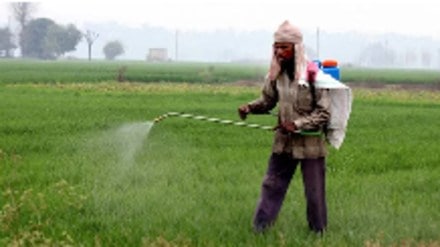By Ashok Gulati,
October 16 is celebrated as World Food Day every year by the Food and Agriculture Organization (FAO) of the United Nations. It is a reminder of the commitment made at the highest level to ensure food and nutritional security of the people living on this planet. The world has made tremendous progress in producing more food through large-scale adoption of better seeds, more irrigation, higher doses of fertilisers, pesticides, farm machinery, etc. This could not have been done without increasing incentives for farmers either through input subsidies or higher prices for their produce, or a mix of some such measures. On this day, many people who are committed to the cause of food and nutritional security, such as scientists, technologists, economists, and agri-businesspeople, renew their vows to eliminate hunger and malnutrition from this planet. According to the FAO’s State of Food Security and Nutrition in the World (SOFI report), roughly 2.33 billion people on still face moderate to severe food insecurity. This is a challenge for those who are committed to providing food and nutrition security to all.
The theme of World Food Day this year is “Right to Foods for a Better Life and a Better Future”. The “Right to Food” approach of FAO encouraged the government of India (the United Progressive Alliance government led by Manmohan Singh) to pass the National Food Security Act (NFSA) in 2013. It was to cover roughly two-thirds of Indian population in providing rice, wheat, or coarse grains (5 kg/person/month) at `3/kg, `2/kg, and `1/kg respectively. These prices could be revised upwards after three years, keeping in view the ballooning magnitude of food subsidy on account of this Act, and the overall finances of the government. At that time, the erstwhile Planning Commission had estimated that the headcount poverty ratio was about 21%, which was contested by some non-governmental organisations, and later this figure was revised upwards to about 29% by the Rangarajan Committee. Even at this higher estimate of poverty, questions were raised by many economists, including me, when I was a part of that government, that why such a highly subsidised food be available to two-thirds of the population.
The Vajpayee government (1998-2004) had reformed the food subsidy regime and made it targeted public distribution system. Under that scheme, the antyodaya (most vulnerable) people get free food, while those above that must pay at least half the minimum support price (MSP) being paid to the farmer, and those above the poverty line pay 90% of the MSP. I still feel that was the most rational policy decision. The “Right to Food” does not mean that everyone, or two-thirds of the population, will get free food. The government’s job is to make sure that food is easily available and accessible. But distributing free food to more than 800 million people today is economically irrational, to say the least.
The present government of the National Democratic Alliance, led by Prime Minister Narendra Modi, has used a different definition of measuring poverty. The Niti Aayog’s multi-dimensional poverty index says that the poverty ratio declined from 29.13% in 2013-14 to 11.28% in 2022-23. If this is truly the case, and the government does not stop bragging about this achievement, why are we still distributing free food to 813 million people? Remember, even a little ant has to work a lot for ensuring its food security, and you can see them even storing food, working in a long chain with cooperation. Why can’t humans work and earn and have their basic food? As a policy analyst, I have no problem if the government wants to give free food to even say 15% of the population. But above that, everyone must pay for food. Free food beyond this 15% is nothing else but a pure political bait for votes. And this must be resisted by taxpayers. Why I am saying so is because this is the largest subsidy in the Union Budget, and this, along with fertiliser subsidy, cuts down much more rational and productive investments in the agri-food space, such as in agri-R&D, precision agriculture, micro-nutrients, women’s education, sanitation, etc. These investments are almost 10 times more effective in ensuring food and nutritional security of our people than free food and highly subsidised fertilisers and power. Subsidies, when they are abundant and almost open-ended, become a den of corruption. ICRIER research shows that a substantial part (25-30%) of these two subsidies, food, and fertilisers never reaches the intended beneficiaries. And if one looks at the inefficiency in the use of these two subsidies, and adds that to the leakages, the overall loss easily goes to 40-50% of the total amount of resources being spent on them. This defeats the very purpose of “Right to Food”.
Can this regime of highly ineffective food and fertiliser subsidies be reformed? The short answer is yes, provided the government has the courage to bite the bullet and have enough lead time to prepare for its proper implementation. The lead time is not many years, but just six-12 months, and a group of dedicated people who are committed to this cause of rationalisation. Digitalisation of the agri-food system can come in very handy in chalking out a more rational and robust system that can help achieve the zero-hunger target of the sustainable development goals by 2030. In this process, beware of engaging roadside consulting companies, who open their shops to make quick money, and get contracts from the government even by greasing palms through their bureaucratic friends — and they are mushrooming in India.
If the Modi government can take up this challenge, it can make Indian agriculture more vibrant, climate-resilient, and nutritious, helping to overcome the curse of malnutrition. Else, drum-beating slogans will go on without much change in the agri-food space.
Ashok Gulati, Distinguished professor, ICRIER.
Disclaimer: Views expressed are personal and do not reflect the official position or policy of FinancialExpress.com. Reproducing this content without permission is prohibited.
